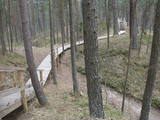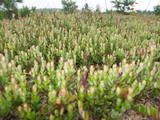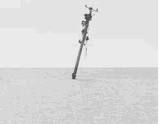| Нo | Название | Описание |
|---|---|---|
|
При посещении пивоварни можно ознакомиться с процессом производства пива. Дегустация сортов пива и солодовых напитков, произведенных в пивоварне. |
||
|
The nature park in the city of Jūrmala was set up to protect dune, pine forest and shoreline habitats. This park features one of the most attractive nature trails in the Rīga area, and it is found near the famous Ragakāpa dune, which can be as much as 17 metres high. This is an excellent opportunity to study dune habitats and the plants, birds, insects, etc., which live there. Visitors can also see pine trees that are 100 years old and older. |
||
|
Выполняет работы (практические и полезные в хозяйстве вещи) в латышском этнографическом стиле и продолжает старые латышские традиции кузнечного искусства. Посетители могут выковать гвоздь или подкову. |
||
|
Maršruts "Murjāņi - Līgatne" ved caur Gaujas senieleju ar devona smilšakmens atsegumiem, raksturīgo augu valsti un dzīvniekiem. Krastos sastopami Latvijā lielākie nogāžu un gravu meži ar liepām, ozoliem, gobām un ošiem. Upes līkumos palienē aug baltalkšņu un vīksnu audzes. Uz koku stumbriem atrodams plaušķērpis. Senieleja bagāta ar sausokņiem un kritalām, tāpēc Gaujas krastu mežos dzīvo visu Latvijā sastopamo dzeņu dzimtas sugu putni. Smilšainajās Gaujmalas pļavās un Gaujas vecupēs ir bagātīga bezmugurkaulnieku fauna. Upes krastos ir smilšakmens klintis ar čurkstu alām un zivju dzenīša ligzdām. Klinšu pakājē iztek avoti, kas uztur mikroklimatu ielejā. Gauja ir nozīmīga arī kā Latvijas lielākā lašupe. Maršruts ir daļēji marķēts un papildināts ar norādēm un informācijas stendiem. |
||
|
Находится на главной пешеходной улице города. Пекут пирожки с салом, ватрушки, булочки с корицей, крендели и торты. Предлагают аренду стильных велосипедов vintage. |
||
|
This is a diverse territory in terms of biotopes and landscapes, and the restricted area was established to protect nesting and migrating birds in the area. One part of the swamp has a cranberry farm – one of the first artificially established farms of its type in Latvia.
|
||
|
The farm "Krūmiņi", popularly called the Bread House, is a place to participate in real rural bread baking rituals, make dough and bake pies yourself, get to know grains, explore grain products, create Latvian strength signs and learn about centuries-old traditions related to bread. The heartfelt owners of the farmstead in the old barn also offer to enjoy the anniversaries, unusually celebrate their special holidays and enjoy extended life skills programs with soup cooked by the fire and watching natural events. When visiting the Bread House, you will learn why bread is baked here with the taste of freedom for almost 100 years, and the merry owners of the house know best to tell about it. |
||
|
Историческая дорога (V1279), которая до строительства новой дороги через Эдоле соединяла Кулдигу с Алсунгой. В настоящее время живописная дорога (с гравийным покрытием) вьется через леса и сельскохозяйственные угодья. В подходящее время ее можно использовать как альтернативную дорогу, чтобы познакомиться с ландшафтами региона суйтов. По Старой дороге суйтов можно путешествовать на велосипеде. |
||
|
Этот маршрут включает в себя лучшие пешие тропы и достопримечательности в Национальном парке Гауя. Походы организованы таким образом, что путешественники постоянно находятся в движении. Главная «артерия» парка — это старинная долина реки Гауя с множественными притоками, и глубокие ущелья с массивными обрывами из песчаника времен девонского периода. Поход начинается от одной из самых старинных церквей в Латвии и идет вдоль реки, заканчиваясь у бобслейной трассы в Сигулде. На следующем этапе путешествия вас ждут живописные виды на реку, обрывы и природные тропы. Водный путь реки Амата вьется через девственные леса, и здесь же находится икона латвийского пейзажа — скала Зварте. В Цесисе откройте для себя маленькие улочки, взберитесь на башню церкви Св. Иоанна и посетите руины средневекового замка, прежде чем отправиться по природной тропе Цирулиши для исследования геологической истории края. Поместье Унгурмуйжа — единственное уцелевшее в странах Балтии деревянное поместье в стиле барокко. Короткая тропа вьется между вековыми дубами. В парке находятся также несколько важных культурных достопримечательностей: музей-резерват Турайда, поместье Кримулда и исторический центр Лигатне. |
||
|
Pilsētas rajons dienvidos no Ventas grīvas, kura mūsdienās redzamā mazstāvu koka apbūve sāka veidoties 19. gs. vidū. Ostgala pirmsākumi meklējami 1836. g., kad Krievijas valdība, solot priekšrocības, aicināja apkārtnes zvejniekus apdzīvot smilšaino un kustīgo kāpu pārņemto piekrastes daļu. Ostgals ir atzīts par valsts nozīmes pilsētbūvniecības pieminekli. |
||
|
Dodieties ekskursijā, lai gūtu ieskatu lauku profesijā un dzīvesveidā, kā arī iegūtu jaunus iespaidus un labu atpūtu visai klasei. Ekskursijas laikā apmeklējiet ekopoligonu, kas ir unikāls piemērs ekoloģiski saderīgu darbības virzienu ieviešanai. Pēc tam apmeklējiet saimniecību, kurā iespējams aplūkot Latvijas tumšgalves aitas, uzzināt par to audzēšanas specifiku, dzīves paradumiem un aitkopības nozari Latvijā, kā arī iespējams aplūkot dažādus putnus - tītarus, zosis, pīles, vistas un pērļu vistas. Saimniecībā atrodas arī observatorija, kur var noklausīties lekciju par zvaigznēm, planētām un citām tēmām. Ekskursijas noslēgumā dodieties uz kokapstrādes darbnīcu, lai meistaru vadībā darbotos ar tradicionālajiem kokapstrādes instrumentiem un apgūtu senās spēles. |
||
|
Also known as Lake Jēsis or Lake Iesis, this is the lake in Latvia which has the largest number of islands. Many literary sources and encyclopaedias in the 20th century claimed that there were 69 islands in the lake, but that was an exaggeration, because apparently the authors took sandbars overgrown with reeds and other plants to be islands. The true number is approximately two times lesser. The largest number of islands can be found in the north-eastern part of the lake. The largest one is Lielā Lāča (Big Bear) Island (45 ha). A farm was on the island at one time. The islands and the oak trees that are on the shores of the lake – the Piļoru and Pahatnīku stands of trees – are in a restricted environmental reserve. |
||
|
Neskartu mežu cienītāji var doties izpētīt Plakanciema puses mežu takas. Braucot no Plakanciema pasta nodaļas Mellupu virzienā pa autoceļu V7, pēc aptuveni 1 km jānogriežas ceļā pa labi. Tālāk jādodas uz priekšu vēl 1,2 km. Maršruta sākums - iepretī mājām “Putriņas” ceļa kreisajā pusē, kur sākas meža ceļš. Sākumā maršruts ved pa taisnu meža ceļu. Pēc 500 m nonākam pie ūdenskrātuves (karjera). Šeit ir iespēja doties vai nu gar vienu ūdenskrātuves krastu, vai gar otru. Abās pusēs var aiziet aptuveni līdz ūdenskrātuves pusei un tad griezties atpakaļ. Krastā augošos kokus iecienījuši bebri. Ūdenī peldas pīles, meža ceļa malā vairāki skudrupūžņi, no sakritušo pērno lapu apakšas lien ārā zaķskābenes. |
||
|
Строительство храма велось в период с 1801 – 1804 годы. В центре алтарной части церкви находится картина второй половины 19 века “Христос на кресте”. Колокол отлит в 1895 году, а орган построен в 1914 году. Перед входом в церковь возвышается памятник павшим во время Первой мировой войны и в боях за независимость Латвии (скульптор К.Зале, архитектор А. Бирзниекс), который был открыт в 1930 году. Совсем недавно завершены работы по реставрации фасада и интерьера церкви. |
||
|
Из Риги маршрут ведет в Сигулду, где вы сможете увидеть Олимипийскую бобслейную трассу, посетить средневековый замок Сигулду и проехать в вагончике по канатной дороге до средневекового замка Турайда, наслаждаясь видом на долину реки Гауя. Детям понравятся развлечения, предлагаемые приключенческим центром Тарзан. В парке Лигатне пройдитесь по природным тропам, для того, чтобы понаблюдать за местными дикими животными на их огороженных территориях, а также погуляйте по исторической деревне, изначально возникшей вокруг бумажной фабрики. А далее направляйтесь в Цесис, чтобы посмотреть на впечатляющие руины средневекового замка, а также на живописное обнажение девонских песчаных пород – утес Зварте в Карли. Затем маршрут идет вдоль морского побережья с его песчаными пляжами, идеальными для прогулок, игр и купания. Здесь посетите музей величайшего в мире лгуна – Мюнгхаузена и послушайте истории его необычайных приключений. Затем маршрут ведет в западную часть Латвии и фокусируется на морской и прибрежной жизни. На выезде из Риги посетите морской курорт Юрмалу, остановитесь в Музее Шоколада в Пуре, а затем направляйтесь на мыс Колка, где Рижский залив встречается с открытым морем. Затем пройдитесь по тропам Национального парка Слитере, посетите деревни ливов – одной из самых малочисленных этнических групп в мире , отведайте свежекопченой рыбы. В Вентспилсе найдете множество развлечений для детей – детский городок, узкоколейную железную дорогу, аквапарки, хорошо оборудованный пляж и парк приключений. На обратном пути в Ригу посетите очаровательную Кулдигу с ее хорошо сохранившимся деревянным зодчеством и остановитесь на ферме, где дети смогут пообщаться с сельскими животными. |
||
|
Labiekārtota (informācijas stendi, atpūtas vietas) un marķēta taka, kas ved apkārt Kokšu ezeru virknei, kurā ietilpst Zāļu, Dziļais un Dibena ezers. Iepazīstami mežu biotopi, dzīvnieki un to darbības pēdas. Iespējami trīs dažādi takas izziešanas varianti: 7 km, 4,5 km, 2,7 km. Maršrutu var braukt ar divriteni. Ietilpst Ziemeļvidzemes biosfēras rezervātā. |
||
|
Zemnieku saimniecības "Imantas" galvenais darbības virziens ir olu ražošana. Te iespējams apskatīt lauku saimniecībā dzīvojošos dzīvniekus un dažādu šķirņu vistas, uzzinot kaut ko jaunu vai sen piemirstu par vistām un olām. Piedāvā arī iegādāties lauku olas. |
||
|
Das beinah 100 km langes und bis zu 36 km breites aus dem Süßwasser bestehende Haff, das im Norden mit der Ostsee verbunden ist. Das Haff trennt vom Merr die eindrucksvolle Kurische Nehrung. Ins Kurische Haff mündet der größte Fluss Litauens Nemunas ein. |
||
|
Das Museum befindet sich in der Festung von Kopgalis. Im Aquarium des Museums sind Fische und Tiere der Ostsee und anderer Meere und Ozeane zu sehen. Eine Ausstellung. Pinguine und Seehunde. In den Pulverkellern der Festung ist eine Ausstellung der Seefhrt Litauens, aber auf den Bollwerken eine Ausstellung der Gewehr eingerichtet. Das einzige Delfinarium im Baltikum. |
||
|
На авиационном полигоне в Папе проходило обучение стрельбе и бомбометанию по целям. В настоящее время объект принадлежит совету края и не используется. В море сохранились останки затонувших кораблей и цели.
|
||



























